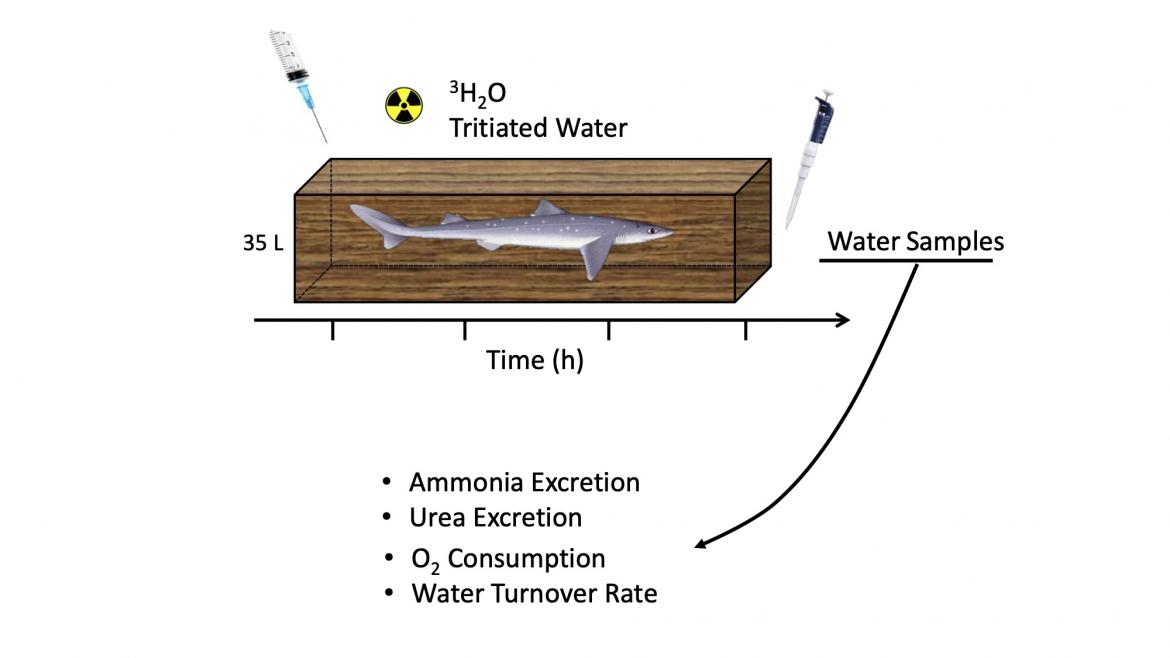
Marina Giacomin, Patricia M. Schulte, Chris M. Wood. 2022. Osmorespiratory compromise in an elasmobranch: oxygen consumption, ventilation and nitrogen metabolism during recovery from exhaustive exercise in dogfish sharks (Squalus suckleyi)
Abstract
The functional trade-off between respiratory gas exchange versus osmolyte and water balance that occurs at the thin, highly vascularized gills of fishes has been termed the osmorespiratory compromise. Increases in gas exchange capacity for meeting elevated oxygen demands can end up favoring the passive movement of osmolytes and water, potentially causing a disturbance in osmotic balance. This phenomenon has been studied only sparsely in marine elasmobranchs. Our goal was to evaluate the effects of exhaustive exercise (as a modulator of oxygen demand) on oxygen consumption (MO2), branchial losses of nitrogenous products (ammonia and urea-N), diffusive water exchange rates, and gill ventilation (frequency and amplitude), in the Pacific spiny dogfish (Squalus suckleyi). To that end, MO2, osmolyte fluxes, diffusive water exchange rate, and venti- lation dynamics were first measured under resting control conditions, then sharks were exercised until exhaustion (20 min), and the same parameters were monitored for the subsequent 4 h of recovery. While MO2 nearly doubled immediately after exercise and remained elevated for 2 h, ventilation dynamics did not change, suggesting that fish were increasing oxygen extraction efficiency at the gills. Diffusive water flux rates (measured over 0–2 h of recovery) were not affected. Ammonia losses were elevated by 7.6-fold immediately after exercise and remained elevated for 3 h into recovery, while urea-N losses were elevated only 1.75-fold and returned to control levels after 1 h. These results are consistent with previous investigations using different challenges (hypoxia, high temperature) and point to a tighter regulation of urea-N conservation mechanisms at the gills, likely due to the use of urea as a prized osmolyte in elasmobranchs. Environmental hyperoxia offered no relief from the osmorespiratory compromise, as there were no effects on any of the parameters measured during recovery from exhaustive exercise.